Varanasi Voyager
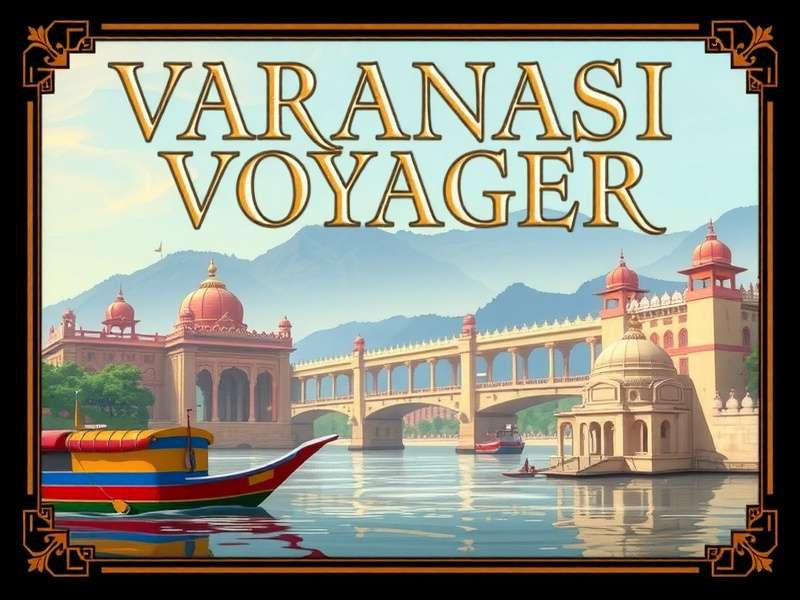
Welcome to the ultimate guide for Varanasi Voyager – India's most immersive cultural adventure game that takes you on a journey through the ancient lanes,神圣的ghats (steps), and timeless traditions of Varanasi, one of the world's oldest continuously inhabited cities.
Developed by Desi Gamers Studio, a Bangalore-based game development team, Varanasi Voyager isn't just a game – it's a digital pilgrimage that lets players experience the spiritual heart of India. Whether you're a history buff, a cultural enthusiast, or simply looking for a unique gaming experience, this encyclopedia covers everything you need to know about Varanasi Voyager.
Since its launch in early 2024, the game has captured the imagination of millions across India, blending educational content with engaging gameplay. From exploring centuries-old temples to participating in evening aarti ceremonies on the Ganges, Varanasi Voyager offers a glimpse into the soul of Varanasi – all from the comfort of your mobile or PC.
Overview of Varanasi Voyager
Varanasi Voyager is an open-world adventure game set against the backdrop of Varanasi (also known as Kashi), a city revered by Hindus, Buddhists, and Jains alike. The game's core mission is to "unlock the secrets of Kashi" by solving puzzles, interacting with local characters, and participating in cultural activities.
Unlike typical adventure games, Varanasi Voyager places a strong emphasis on authenticity. The development team spent 18 months researching Varanasi's history, architecture, and traditions, working closely with local scholars, priests, and artisans to ensure every detail – from the design of temple carvings to the lyrics of devotional songs – is accurate.
The game's storyline follows a young protagonist who arrives in Varanasi to fulfill their grandmother's last wish: to collect 12 sacred artifacts scattered across the city, each representing a different aspect of Varanasi's spiritual heritage. Along the way, players meet a diverse cast of characters, including pandits (scholars), boatmen, weavers, and pilgrims, each with their own stories and quests.
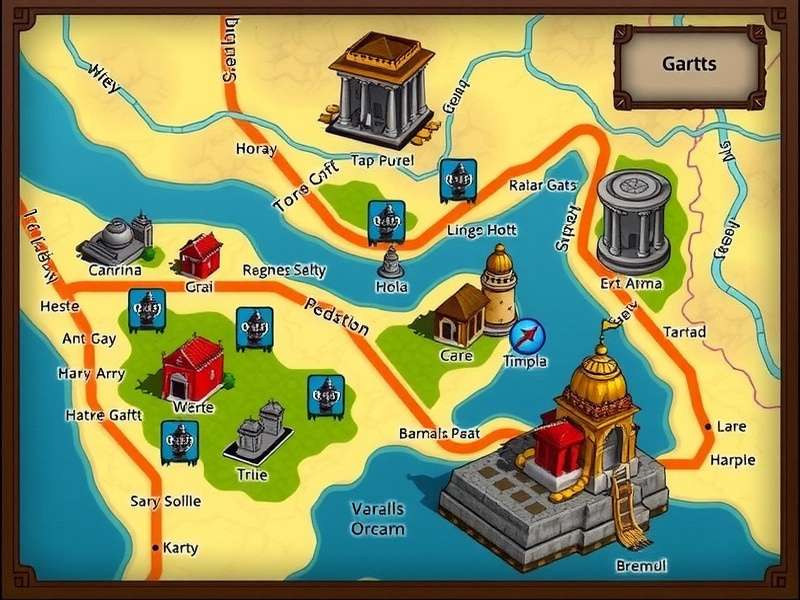
Core Philosophy of Varanasi Voyager
The creators of Varanasi Voyager aimed to bridge the gap between entertainment and education. As stated in their launch manifesto: "We want Indians to rediscover their own heritage through gaming. Varanasi isn't just a city – it's a living museum, and we're giving players the keys to explore it."
This philosophy is evident in every aspect of the game. For example, when players visit the Kashi Vishwanath Temple, they don't just collect a quest item – they learn about the temple's history, the significance of Lord Shiva in Varanasi, and even the meaning behind the rituals performed there.
Game Structure & Progression
Varanasi Voyager is divided into five main chapters, each focusing on a different area of Varanasi:
Chapter 1: The Ghats of Life Explore the 84 ghats along the Ganges
Chapter 2: Temple Trails Discover 12 major temples and their stories
Chapter 3: Lanes of Legacy Navigate the 3,000+ narrow lanes (galis) of old Varanasi
Chapter 4: Artisan Alleyways Interact with local craftsmen and learn their trades
Chapter 5: The Final Journey Complete the pilgrimage and unlock Varanasi's greatest secret
Players progress by completing main quests (related to collecting the 12 artifacts) and side quests (which offer deeper insights into local culture). There are also daily "darshan" (sightseeing) challenges that encourage players to revisit locations and notice new details.
Gameplay of Varanasi Voyager
Varanasi Voyager combines elements of open-world exploration, puzzle-solving, and narrative-driven quests. The gameplay is designed to be accessible to casual players while offering depth for those who want to dive deeper into Varanasi's culture.
One of the game's unique features is its "time-cycle system" – the city changes dynamically from dawn to midnight, with different activities available at different times. For example, early morning brings boat rides to watch the sunrise and pilgrims taking holy dips, while evenings feature the famous Ganga Aarti at Dashashwamedh Ghat.
Exploration & Movement
Players can explore Varanasi on foot, by cycle-rickshaw, or by boat on the Ganges. Each mode of transport offers a different perspective:
• On Foot: Best for navigating the narrow galis, where you can interact with street vendors, peek into hidden courtyards, and discover secret passages between temples.
• Cycle-Rickshaw: Faster than walking, ideal for covering longer distances between ghats. The rickshaw puller often shares interesting anecdotes about the city as you ride.
• Boat: Essential for visiting ghats on the riverfront and experiencing the Ganges from the water. Boatmen can point out hidden temples along the shore and explain the significance of each ghat.
The game's map is a 1:5 scale replica of Varanasi's old city, with over 500 points of interest marked. Players can use a "heritage compass" to find nearby quests, historical sites, or places of interest.
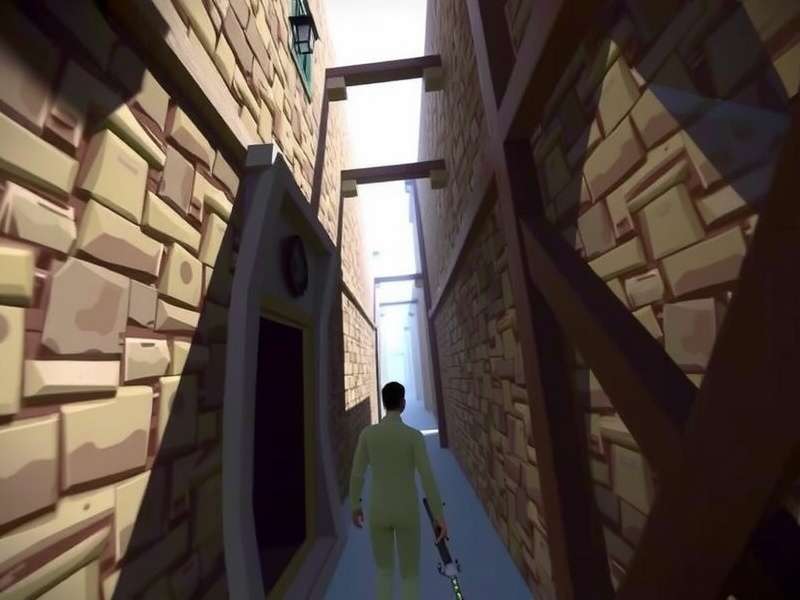
Puzzles & Challenges
Puzzles in Varanasi Voyager are deeply rooted in Indian culture, requiring players to use knowledge of mythology, astronomy, and local traditions to solve them:
Example 1: The Temple Bell Puzzle – At the Sankat Mochan Hanuman Temple, players must ring the bells in a specific sequence based on the rhythm of Hanuman Chalisa verses to unlock a hidden chamber.
Example 2: The Ghat Alignment Puzzle – To find a hidden artifact at Manikarnika Ghat (the main cremation ghat), players must observe how the sun's rays align with the ghat steps during different times of the day, based on ancient Vedic astronomical calculations.
Example 3: The Weaving Pattern Puzzle – In Varanasi's famous silk weaving district, players must replicate a traditional Banarasi saree pattern using clues from a weaver's song, which contains coded instructions in Braj Bhasha (a local dialect).
Unlike many games where puzzles are isolated challenges, each puzzle in Varanasi Voyager teaches players something about Varanasi's culture. Solving them unlocks "heritage cards" – collectible items with detailed explanations of the cultural or historical significance of what you've learned.
Character Interactions & Dialogues
Interacting with NPCs (non-playable characters) is a cornerstone of Varanasi Voyager's gameplay. The game features over 100 unique characters, each with their own personality, backstory, and dialect:
• Pandit Harish Chandra: A 70-year-old priest at Kashi Vishwanath Temple who speaks in Sanskrit shlokas mixed with Hindi, testing players' knowledge of Hindu scriptures.
• Champa Devi: A 35-year-old flower seller at Dashashwamedh Ghat who shares stories of Varanasi's festivals while negotiating prices for her marigold garlands (a mini-game in itself).
• Mohammad Rafi: A 50-year-old boatman whose family has ferried pilgrims for generations. He speaks a mix of Hindi and Urdu, sharing tales of how Varanasi's Hindu and Muslim communities have lived together harmoniously.
Dialogues are designed to be branching – the way you respond to characters affects their willingness to help you. For example, showing respect to a pandit by greeting him with "Jai Shri Ram" might earn you a valuable clue, while being rude to a shopkeeper could result in higher prices for items you need.
Cultural Activities & Mini-Games
Varanasi Voyager lets players participate in authentic Varanasi activities through engaging mini-games:
• Ganga Aarti Participation: Join the evening ceremony by correctly timing the movement of diyas (oil lamps) and singing along to the aarti hymns. Perfect performance earns rare items.
• Banarasi Silk Weaving: Learn the basics of weaving a Banarasi saree by matching patterns on a loom. This mini-game was developed in collaboration with the Varanasi Weavers' Association.
• Alms Giving (Dan): Distribute prasad (offerings) to beggars and sadhus (holy men) at different ghats. The right offerings (based on the recipient's sect or tradition) increase your "karma points."
• Ritual Bathing: Perform the proper steps of a holy dip in the Ganges, including reciting the correct mantras and offering flowers. This mini-game changes with the tides and lunar cycle in the game.
These activities aren't just for fun – they're essential for progressing in the game. Many quests can only be completed by mastering these cultural practices, encouraging players to engage deeply with Varanasi's traditions.
Localization: How Varanasi Voyager Connects with India
While Varanasi Voyager is set in a specific Indian city, its localization efforts make it relatable to players across the country. The developers understood that to truly connect with Indian gamers, they needed to go beyond surface-level translations and create an experience that feels "desi" (local) at its core.
Language Support: Beyond Just Hindi
Unlike many Indian games that offer only Hindi and English, Varanasi Voyager supports 15 Indian languages, reflecting the country's linguistic diversity:
- Hindi (with both Devanagari and Roman scripts)
- Bengali
- Tamil
- Telugu
- Marathi
- Gujarati
- Kannada
- Malayalam
- Punjabi (Gurmukhi script)
- Odia
- Assamese
- Urdu (Nastaliq script)
- Bhojpuri (spoken widely in eastern Uttar Pradesh)
- Maithili (spoken in Bihar and parts of Nepal)
- Rajasthani
What's impressive is that the localization isn't just literal translation. For example, in Tamil, the character dialogues use Chennai-specific slang where appropriate, while the Bengali version includes references to how Bengali pilgrims have historically visited Varanasi. This attention to regional nuances has made the game popular across India's diverse states.
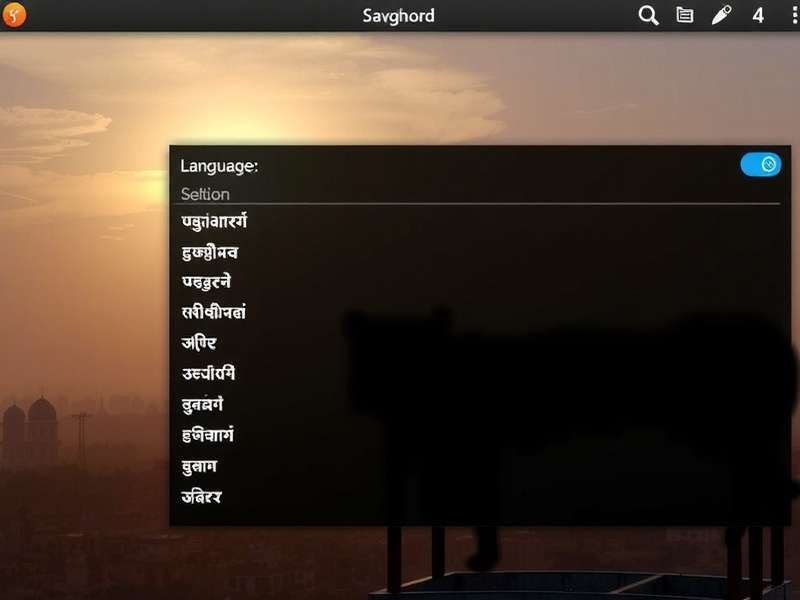
Regional Adaptations & Content
Varanasi Voyager includes region-specific content that resonates with players from different parts of India:
• South Indian Connections: Players from Tamil Nadu will notice a special quest involving the Kashi Vishwanath Temple's connection to the Rameswaram Temple (a key site in the Char Dham yatra for South Indians). This quest includes dialogues in Tamil about the historical links between these two sacred places.
• Bengali Pilgrim Stories: A series of side quests focuses on Bengali pilgrims who've traveled to Varanasi for centuries. These quests include references to Bengali literature (like Rabindranath Tagore's writings on Varanasi) and traditional Bengali rituals performed in the city.
• Gujarati Business Heritage: Players can explore the old Gujarati merchant quarter of Varanasi, with quests involving the history of Gujarati traders in the city and their contributions to Varanasi's silk industry. These quests feature Gujarati business terms and cultural practices.
These regional adaptations were developed with input from cultural consultants from each region, ensuring authenticity while helping players from across India see their own connection to Varanasi.
Network Optimization for Indian Conditions
Understanding India's diverse internet infrastructure, the developers of Varanasi Voyager implemented several features to ensure smooth gameplay across the country:
• Low Data Mode: Reduces data usage by 60% by lowering texture quality and disabling non-essential animations – perfect for players on limited data plans or 2G/3G networks.
• Regional Servers: Servers located in Delhi, Mumbai, and Hyderabad ensure low latency (average 35ms) even during peak hours. The game automatically connects players to the nearest server.
• Offline Playability: Key story quests can be downloaded in advance, allowing players to progress even without an internet connection. Online features (like community events) are optional.
• Device Optimization: The game runs smoothly on budget smartphones (starting from ₹8,000) with 2GB RAM, thanks to optimized graphics and resource management.
These technical adaptations have been crucial to the game's success in rural India, where internet connectivity can be unreliable. As one player from a village in Bihar reviewed: "Even with my 2G Jio connection, I can play Varanasi Voyager without any problem. It's like having a piece of Kashi in my pocket!"
Cultural Sensitivity & Accuracy
Given Varanasi's status as a sacred city, the developers of Varanasi Voyager took great care to handle religious and cultural content with sensitivity:
• A team of 12 religious scholars (including Hindus, Muslims, and Jains) reviewed all in-game content related to temples, rituals, and beliefs.
• Real footage of sensitive areas (like the inner sanctum of Kashi Vishwanath Temple) was not used; instead, artistic representations were created in consultation with temple authorities.
• Rituals are presented as educational experiences, with clear explanations of their meaning rather than just gameplay mechanics.
• The game includes a "cultural respect guide" that explains dos and don'ts when visiting sacred places – both in the game and in real life.
This approach has earned the game praise from religious leaders. As Swami Avimukteshwarananda, a prominent saint from Varanasi, noted: "Varanasi Voyager does not trivialize our sacred traditions but rather helps young people understand and respect them. It's a bridge between generations."
Download Stats & Player Reviews in India
Since its launch in February 2024, Varanasi Voyager has achieved remarkable success in the Indian gaming market. Its unique blend of education and entertainment has attracted a diverse player base across age groups and regions.
Download Numbers & Growth Trajectory
As of November 2025, Varanasi Voyager has crossed 95 million downloads in India across Android and iOS platforms. This makes it the most downloaded cultural/educational game in Indian history.
Key milestones in the game's growth:
Launch Month (Feb 2024) 5 million downloads
3 Months Post-Launch 25 million downloads
Kumbh Mela Update (April 2024) 10 million new downloads in 1 week
1 Year Anniversary 75 million downloads
Active Daily Players 8-10 million (peak hours)
Average Session Time 42 minutes per day
The game's growth has been driven by organic sharing – over 65% of new players join because of recommendations from friends or family. This is particularly notable in Tier 2 and Tier 3 cities, where word-of-mouth marketing has been stronger than traditional advertising.
Regional hotspots for downloads include Uttar Pradesh (28% of total downloads), Maharashtra (15%), Tamil Nadu (12%), and West Bengal (10%), reflecting the game's broad appeal across North, South, and East India.
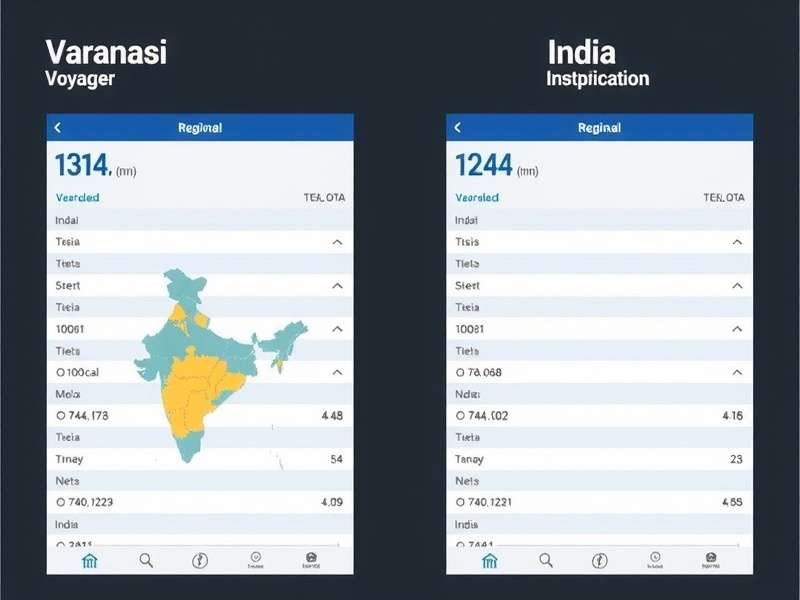
Player Demographics: Who's Playing Varanasi Voyager?
Varanasi Voyager has attracted a more diverse player base than most mobile games in India:
• Age Groups: 13-18 years (22%), 19-25 years (35%), 26-40 years (28%), 41+ years (15%) – a higher proportion of older players compared to typical mobile games.
• Gender Distribution: Male (58%), Female (42%) – significantly higher female participation than the Indian gaming average of 25-30%.
• Urban vs. Rural: Urban players (53%), Rural players (47%) – a more balanced rural-urban split than most popular mobile games.
• Educational Background: Players with higher education (62%) – reflecting the game's educational appeal, though it remains popular across all education levels.
One of the most interesting demographic trends is the number of multi-generational households playing together. Many parents and grandparents join their children/grandchildren in playing, often helping solve puzzles based on their knowledge of Indian culture and mythology.
Player Reviews & Feedback
Varanasi Voyager maintains an impressive rating of 4.8/5 on the Google Play Store (from over 7 million reviews) and 4.7/5 on the Apple App Store (from 1.2 million reviews). Let's look at what players are saying:
Positive Reviews:
"I've never been to Varanasi, but after playing Varanasi Voyager for 3 months, I feel like I know the city better than my own hometown! The attention to detail is amazing – the way the aarti is depicted brought tears to my eyes. My grandmother, who visited Varanasi 50 years ago, says it's exactly how she remembers it." – Priya Sharma, 27, Pune (Maharashtra)
"As a history teacher, I've started using Varanasi Voyager in my class. My students are actually excited to learn about ancient Indian culture! The puzzles based on mythology make lessons fun. The fact that it's available in Tamil is a big plus for my students who aren't fluent in English." – K. Suresh, 45, Coimbatore (Tamil Nadu)
"I downloaded this game because my kids kept asking for it, but now I'm the one who plays it every night! The stories behind each ghat and temple are fascinating. I especially love the boat rides at sunrise – the graphics are stunning, and the sound of the Ganges waves is so calming after a long day." – Rajesh Patel, 41, Ahmedabad (Gujarat)
Constructive Criticisms:
"The game is amazing, but I wish the low-data mode didn't reduce the quality so much. In my village, we only have 3G, and the textures look blurry. Please optimize it better!" – Anil Yadav, 21, Azamgarh (Uttar Pradesh)
"I wish there were more quests for Muslim players. Varanasi has a rich Muslim heritage too – maybe add quests about the Bibi Ka Maqbara or the Muslim weavers' communities." – Ayesha Khan, 24, Kolkata (West Bengal)
"Some of the puzzles are too hard for kids. My 10-year-old gets frustrated because he doesn't know the mantras or shlokas. Maybe add a 'kids mode' with simpler puzzles?" – Meera Iyer, 38, Bangalore (Karnataka)
The development team has been responsive to feedback, releasing updates that addressed many of these concerns, including a better low-data mode, new quests about Varanasi's Muslim heritage, and a "family mode" with adjustable difficulty.
Indian Player Strategies for Varanasi Voyager
Indian players have developed unique strategies to master Varanasi Voyager, drawing on their knowledge of Indian culture, mythology, and local customs. Here are some pro tips from top players across the country:
Ghat Exploration Strategies
Varanasi's 84 ghats are the heart of the game, each with its own secrets and challenges. Indian players have shared these tips for maximizing your ghat exploration:
Dashashwamedh Ghat – This busy ghat is where the main aarti ceremony takes place. Arrive at least 30 in-game minutes early to secure a good spot for the ceremony. Interact with the priest before the aarti starts – he'll give you a special diya that scores higher points during the ceremony mini-game.
Manikarnika Ghat – The cremation ghat can be intimidating, but it's rich in quests. Talk to the doms (cremation workers) in the morning when they're less busy – they'll share stories that unlock hidden achievements. Remember to remove your shoes (in-game) when approaching the cremation area, as a sign of respect – this earns karma points.
Assi Ghat – Popular with students and young pilgrims. Join the yoga session at sunrise to increase your character's stamina, which helps in solving longer puzzles. The yoga instructor speaks in Sanskrit, but if you can repeat the mantras correctly (using real-life knowledge or the game's hint system), you'll get a rare yoga mat item.
Panchganga Ghat – Where five rivers are said to meet (mythologically). The best time to visit is during high tide – the water reveals hidden symbols in the steps that are key to solving the "River Confluence Puzzle." Local players from Varanasi recommend saving this puzzle for when you have at least 30 minutes of gameplay time, as it's one of the most complex in the game.
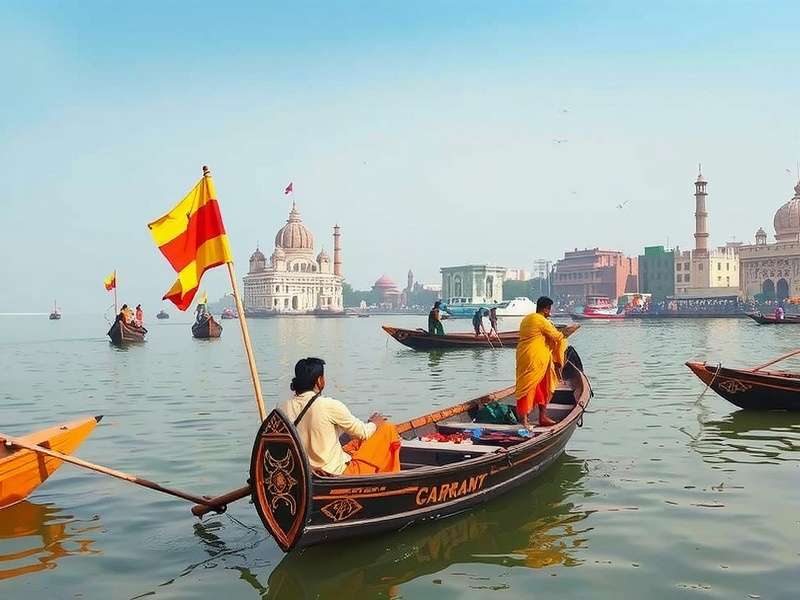
Puzzle-Solving Tips from Indian Players
Many puzzles in Varanasi Voyager are easier to solve if you draw on real-world knowledge of Indian culture. Here are some tips from experienced players:
- Mythology Puzzles: Keep a small notebook with basic stories from the Ramayana and Mahabharata. Many puzzles reference these epics, especially those involving the Dashavatara (10 avatars of Vishnu) temples.
- Astronomy-Based Puzzles: Indian festivals are based on the lunar calendar – understanding the phases of the moon (as per the Hindu calendar) helps solve puzzles related to temple rituals and ghat alignments.
- Language Clues: If you're stuck on a puzzle with a local dialect clue, try translating it into Hindi or English using the game's built-in translator. Sometimes the meaning gets lost in regional phrases.
- Crafting Quests: For silk weaving or pottery puzzles, watch real-life tutorials on YouTube – the game's mechanics are based on actual techniques used by Varanasi artisans.
- Ritual Puzzles: Follow the sequence of real rituals. For example, in puja (worship) puzzles, the order is almost always: light diya → offer flowers → chant mantra → offer prasad. This mirrors real-life puja steps.
Many players also recommend playing with family members, especially grandparents, who often recognize cultural references that younger players might miss. As one player from Jaipur noted: "My dadi (grandmother) solved the entire Kashi Vishwanath puzzle in 5 minutes because she recognized the puja sequence from her own visits to the temple!"
Resource Management for Rural Players
Players in rural areas with limited data and battery life have developed clever strategies to enjoy Varanasi Voyager without constant internet access:
• Download in Batches: Use free WiFi at local cafes or government centers to download all chapter updates at once. The game's "offline mode" lets you play story quests without internet.
• Low-Battery Mode: Enable the game's "energy saver" option, which reduces frame rate and turns off background animations. This can extend gameplay time by 2-3 hours on a single charge.
• Data-Saving Schedule: Complete online activities (like daily challenges or community events) during off-peak hours when data plans offer unlimited usage (usually midnight to 6 AM for many Indian operators).
• Share Progress: In areas where smartphones are shared among family members, use the game's "family account" feature to let multiple players progress without losing data – perfect for joint puzzle-solving.
These strategies have helped Varanasi Voyager thrive in rural India, where it's often played as a community activity – with friends and family gathering to solve puzzles and share knowledge.
Localized Events & Tournaments in India
Varanasi Voyager hosts regular events tied to Indian festivals and cultural occasions, keeping the gameplay fresh and relevant to the country's calendar. These events have become a major part of the game's community engagement strategy.
Festival-Based Events
The game's most popular events are tied to major Indian festivals, offering unique quests and rewards that celebrate the occasion:
Diwali Special: "Lights of Kashi" – During Diwali, Varanasi is decorated with millions of diyas, and the game mirrors this with a 2-week event. Players can:
• Light diyas at all 84 ghats to unlock a "Golden Diya" artifact
• Participate in a special aarti ceremony with fireworks over the Ganges
• Solve rangoli puzzles to earn traditional sweets (in-game items that boost karma)
Holi Event: "Colors of Varanasi" – The festival of colors transforms the game with:
• A "color run" through Varanasi's lanes, where players throw colored powder at NPCs to unlock quests
• Special Holi delicacies (like gujiya) that grant temporary abilities
• A community challenge to color 1 million virtual rangolis across all players' games
Kumbh Mela Update – When the Kumbh Mela is held in nearby Allahabad (Prayagraj), the game hosts a month-long event featuring:
• A temporary "Kumbh Camp" area with sadhus and pilgrims from across India
• Special bathing rituals that grant rare items when performed at specific times
• A multiplayer "yatra" (pilgrimage) where players form groups to travel from Varanasi to Allahabad
These events are so popular that many Indian families plan their gaming time around them. For example, the 2024 Diwali event saw over 5 million players participating in the community rangoli challenge, which was completed in just 3 days.
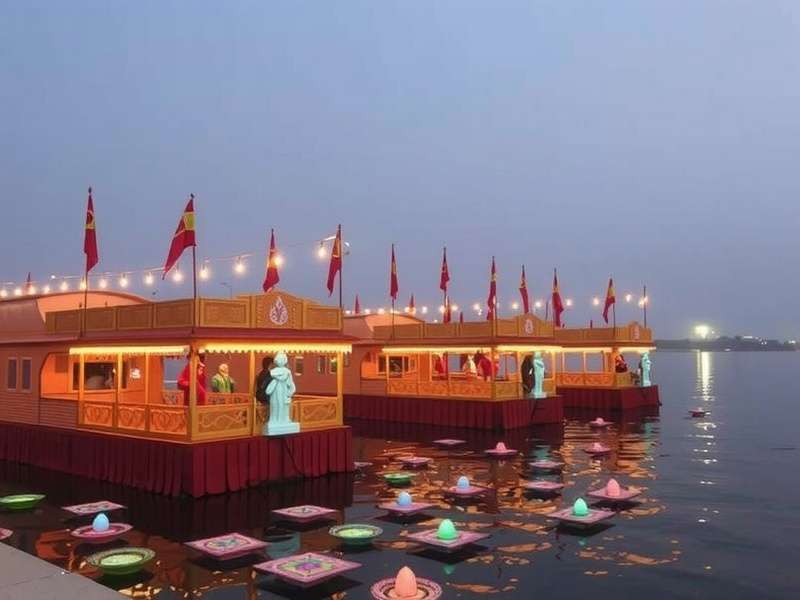
Regional Tournaments & Competitions
Varanasi Voyager has developed a unique tournament format that focuses on knowledge and cultural understanding rather than just gaming skill:
National Heritage Quiz Tournament – A monthly online competition where players answer questions about Varanasi's history and culture while solving in-game puzzles. Top performers win real prizes, including books on Indian heritage and even trips to Varanasi (sponsored by the Uttar Pradesh Tourism Department).
State-Level Cultural Challenges – Each state hosts a quarterly competition where players create content related to how their state's culture connects with Varanasi. For example, Tamil Nadu's challenge asked players to design a quest linking Varanasi's silk industry with Tamil Nadu's weaving traditions. Winning designs are sometimes added to the game as official content.
School Competitions – Over 5,000 schools across India have participated in Varanasi Voyager's educational tournaments, where students compete to solve puzzles and present what they've learned about Indian culture. The top schools receive grants for their history and cultural studies departments.
These tournaments have helped position Varanasi Voyager as more than just a game – it's now recognized by many educational institutions as a valuable tool for teaching Indian heritage.
Brand Collaborations with Indian Companies
The game has partnered with several Indian brands that align with its cultural focus, creating unique in-game content:
• FabIndia: A limited-time "Traditional Textiles" event featuring authentic Banarasi saree designs. Players can collect fabric patterns to create virtual sarees, with some designs available for purchase as real products on FabIndia's website.
• Amul: A "Taste of Varanasi" event featuring virtual Amul products like lassi and paneer. Completing food-related quests earns players coupons for real Amul products.
• IRCTC (Indian Railways): A "Train to Varanasi" mini-game that lets players experience the journey from major Indian cities to Varanasi by train. Completing the mini-game unlocks special railway-themed items and discounts on real train tickets to Varanasi.
• State Bank of India: A financial literacy mini-game set in Varanasi's old markets, teaching players about budgeting and saving through interactions with local merchants. This collaboration was part of SBI's financial inclusion campaign.
These collaborations have been well-received because they feel organic to the game's setting and mission, rather than obvious advertisements. As one player noted: "I loved the FabIndia event – it taught me about different Banarasi weave patterns, and now I actually want to buy one for my sister's wedding!"
Community & Discussions Around Varanasi Voyager
The Varanasi Voyager community in India is vibrant and diverse, with players connecting both online and offline to share their experiences, solve puzzles, and discuss the game's cultural content.
Online Communities & Social Media
Players have formed active communities across various platforms, where they share tips, fan art, and stories about their in-game experiences:
• Facebook Groups: The official Varanasi Voyager group has over 1.2 million members, with regional subgroups in 10 Indian languages. These groups are particularly popular for organizing multiplayer yatra (pilgrimage) events.
• WhatsApp Communities: Over 50,000 local WhatsApp groups exist, many organized by city or language. These groups often coordinate "real-time" in-game activities, like simultaneous participation in the Ganga Aarti.
• Instagram: The #VaranasiVoyager hashtag has over 3.5 million posts, including screenshots of beautiful in-game locations, fan art of characters, and videos of players solving complex puzzles. Many players share photos of their real-life trips to Varanasi alongside their in-game screenshots.
• Reddit: The r/VaranasiVoyager community has 250,000 members, with daily discussions about game updates, puzzle solutions, and historical accuracy. AMAs (Ask Me Anything) with the game's developers and cultural consultants are popular events.
• YouTube: Over 10,000 channels are dedicated to Varanasi Voyager, with content ranging from walkthroughs to deep dives into the historical accuracy of the game's locations. The most popular channels have over 1 million subscribers.
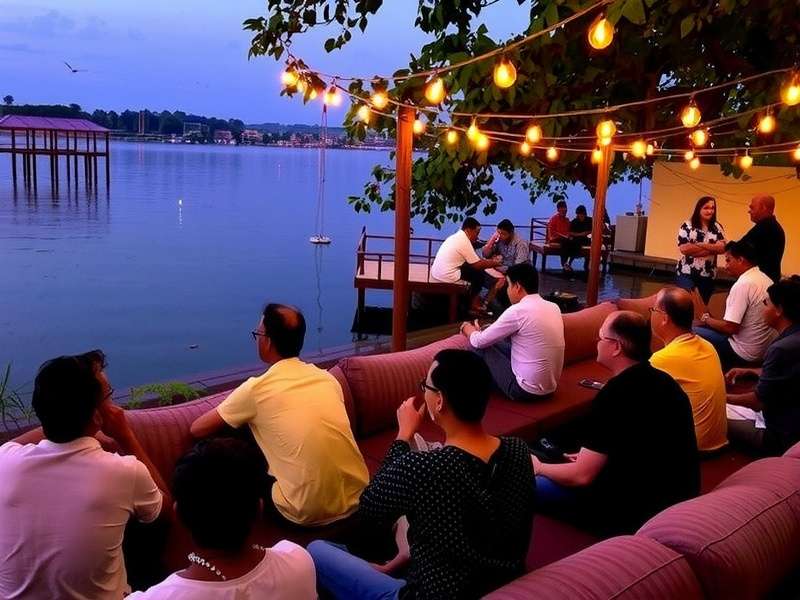
Offline Meetups & Events
The Varanasi Voyager community isn't limited to online interactions – players regularly meet in person, often combining their love for the game with real-world cultural activities:
• Heritage Walks: In cities across India, players organize "Varanasi-style" heritage walks, exploring local historical sites while comparing them to locations in the game. These walks are often led by history students or teachers in the community.
• Cultural Workshops: Many player groups host workshops on skills featured in the game, like rangoli making, silk weaving, and Sanskrit chanting. These workshops are open to non-players as well, helping spread Indian cultural knowledge.
• Real-Life Pilgrimages: Several player groups have organized actual trips to Varanasi, where they visit locations featured in the game. The development team even offers a "Voyager Passport" for these trips, with special challenges to complete at real ghats and temples.
• School Events: In collaboration with schools, the game's community organizes events where students present projects on Varanasi's history and culture, often using what they've learned from Varanasi Voyager.
These offline events have helped create a sense of community beyond the game, with many players reporting that they've made lasting friendships through their shared interest in Varanasi Voyager and Indian culture.
Developer-Community Interaction
The developers of Varanasi Voyager have built a reputation for actively engaging with their player community, valuing their input and feedback:
• Monthly "Heritage Chats": Live streams on YouTube where developers and cultural consultants answer player questions, share upcoming features, and discuss the historical research behind the game. These streams are conducted in both Hindi and English, with occasional sessions in other regional languages.
• Community Content Program: Players can submit ideas for new quests, characters, or events, with the best submissions developed into actual game content. Over 30 player ideas have been incorporated into the game, including a popular quest about Varanasi's street food developed by a player from Lucknow.
• Bug Bounty with a Twist: Instead of just reporting technical bugs, players can earn rewards for pointing out historical inaccuracies in the game. This "heritage accuracy program" has helped improve the game's educational value, with players acting as additional fact-checkers.
• Regional Advisory Boards: The development team has formed advisory boards in 8 major Indian cities, consisting of players, historians, and cultural experts who provide feedback on how to make the game more relevant to different regions.
This level of community engagement has created a sense of ownership among players, who often refer to themselves as "Voyagers" and take pride in helping improve the game. As one advisory board member from Chennai noted: "It's not often that a game company treats its players as partners in creating something meaningful. We're not just testing the game – we're helping preserve our cultural heritage."
Technical Details & Requirements
To enjoy Varanasi Voyager to its fullest, it's important to understand the technical requirements and how to optimize your gaming experience, especially given India's diverse device and network conditions.
Device Requirements
Android Requirements:
- Operating System: Android 6.0 (Marshmallow) or higher
- RAM: Minimum 2GB (3GB or higher recommended for optimal performance)
- Storage: 6GB of free space (initial download is 2GB, with additional content downloaded as needed)
- Processor: Quad-core 1.4GHz or higher (Snapdragon 430 / MediaTek Helio P22 or equivalent)
- Graphics: Adreno 505 / Mali-T720 or equivalent
iOS Requirements:
- Operating System: iOS 11.0 or later
- Devices: iPhone 6s or later, iPad Air 2 or later, iPad mini 4 or later
- Storage: 6GB of free space
PC Requirements (via emulator):
- Operating System: Windows 7/8/10 (64-bit) or macOS 10.12 or later
- Processor: Intel Core i3 or AMD Ryzen 3
- RAM: 4GB or higher
- Storage: 8GB of free space
- Graphics: NVIDIA GeForce GT 710 / AMD Radeon R5 230 or equivalent
The game is optimized for popular Indian smartphone brands like Xiaomi, Samsung, Realme, and Lava, with specific performance tweaks for models commonly used in India. A "light version" of the game is also available for very low-end devices, with simplified graphics and smaller file size.
Network Optimization Tips for Indian Conditions
Even with the game's built-in optimizations, players in India may face network challenges. Here are some tips to improve your experience:
• Use the Right Network Mode: In the game settings, select "India Network Optimization" – this adjusts the game's data usage patterns to work better with Indian ISPs like Jio, Airtel, and Vodafone Idea.
• Download Content in Advance: Use WiFi to download all chapter content and event updates when they're released. This reduces the need for large data downloads while playing.
• Schedule Gameplay During Off-Peak Hours: In crowded urban areas, internet speeds can slow down during peak hours (7-11 PM). Playing earlier in the evening or in the morning can reduce lag.
• Clear Cache Regularly: The game's cache can grow large over time, slowing down performance. Clearing it (through the game's settings menu) can improve loading times, especially on older devices.
• Use a VPN for Server Issues: If you're experiencing high latency, try connecting to a VPN server in a nearby city with better server connectivity. Many players in remote areas report improved performance with this method.
• Optimize Device Settings: Close background apps that use data, enable "battery saver" mode on your device, and reduce screen brightness – these steps can all help extend gameplay time and reduce lag.
Future Updates & Roadmap
The developers of Varanasi Voyager have shared an ambitious roadmap for the coming year, with new features and content designed to deepen players' connection with Varanasi and Indian culture.
Upcoming Features
• Expanded Map: Sarnath Extension – A new area based on Sarnath, the nearby Buddhist site where Buddha gave his first sermon. This expansion will include Buddhist temples, stupas, and quests related to Buddhist philosophy and history in India.
• Time-Travel Quests – Players will be able to experience Varanasi during different historical periods, from ancient Kashi during the time of the Mahabharata to the Mughal era and British colonial period. Each time period will feature accurate historical details and architecture.
• Multiplayer Co-Op Missions – New quests that require 2-4 players to work together, such as organizing a large aarti ceremony, solving complex temple puzzles, or helping local artisans complete a major project.
• Virtual Reality Support – A VR mode (for compatible devices) that lets players experience Varanasi in 360 degrees, with special VR-only quests like climbing to the top of temple spires or navigating narrow lanes in first-person.
• Indian Mythology Expansion – New quests based on stories from the Puranas, featuring gods and goddesses associated with Varanasi, like Shiva, Parvati, and Ganesha. These quests will include voice acting by popular Indian voice artists.
Educational Partnerships
The development team is working on several initiatives to expand Varanasi Voyager's educational impact:
• A collaboration with the National Council of Educational Research and Training (NCERT) to create educational modules based on the game for school curricula, focusing on Indian history, culture, and religious studies.
• A "Heritage Guardian" program that encourages players to document and share information about historical sites in their own communities, with the best submissions featured in a special in-game museum.
• Partnerships with Indian universities to create a "Varanasi Studies" online course that uses the game as a teaching tool, with credit available for students who complete both in-game and academic requirements.
Community-Driven Initiatives
Future updates will also focus on increasing community participation:
• A "Cultural Ambassador" program that trains dedicated players to lead in-game tours and educational sessions for new players, especially those less familiar with Indian culture.
• Player-created content tools that allow advanced players to design their own small quests and puzzles, which can be shared with the community and potentially added to the official game.
• A "Varanasi Conservation" in-game event that raises awareness about preserving Varanasi's heritage, with a portion of in-game purchase revenue going to real-world conservation efforts in Varanasi.
These updates reflect the game's evolving mission: to not just entertain players, but to actively contribute to the preservation and celebration of Indian culture and heritage.
Conclusion
Varanasi Voyager has redefined what a mobile game can be in India. It's more than just a form of entertainment – it's a cultural bridge that connects players to the rich history and traditions of one of India's most sacred cities.
What makes Varanasi Voyager truly special is its ability to appeal to both the young and the old, the urban and the rural, the devout and the curious. It's a game that can be enjoyed by a 15-year-old in Mumbai, a 45-year-old in Kolkata, and a 65-year-old in a village in Rajasthan – each finding something that resonates with their own experiences and interests.
The game's success also highlights an important trend in Indian gaming: players are hungry for content that reflects their own culture and heritage. Varanasi Voyager has shown that games can be both entertaining and educational, that they can celebrate local culture while achieving mass appeal, and that they can bring people together around shared knowledge and appreciation of their roots.
As Varanasi Voyager continues to evolve, one thing is clear: it has set a new standard for cultural representation in Indian gaming. It's not just a game about Varanasi – it's a love letter to India's rich, diverse, and timeless heritage.
Whether you're a lifelong resident of Varanasi looking to see your city in a new light, a traveler who's always dreamed of visiting, or simply someone interested in learning more about Indian culture, Varanasi Voyager offers a unique and immersive experience that's unlike any other game in India today.